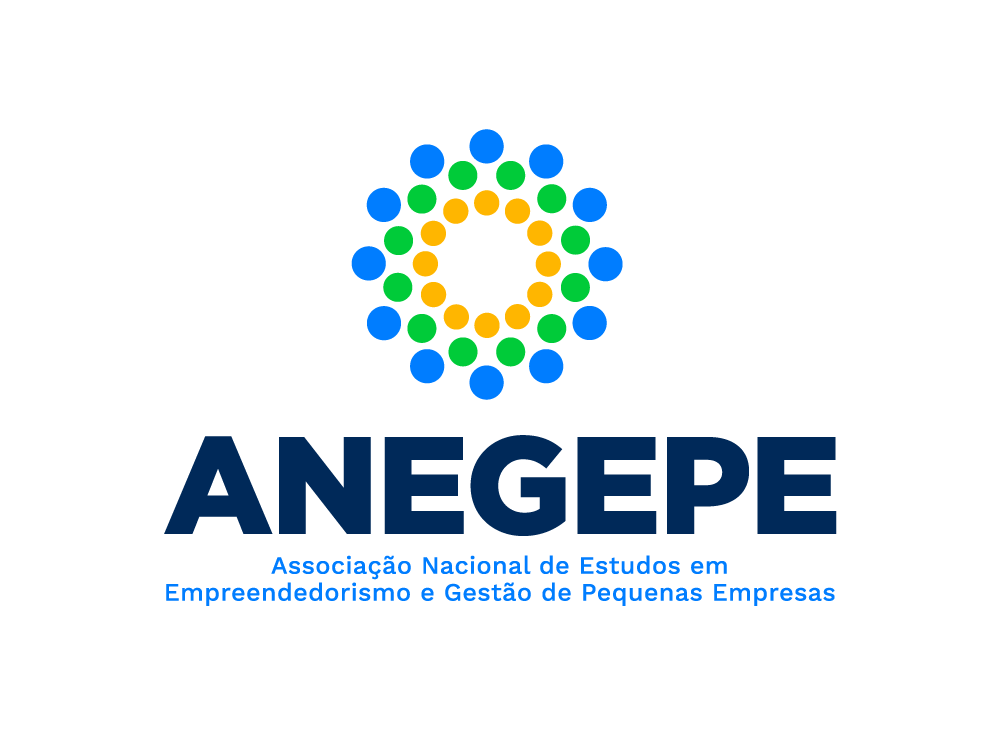Organizational innovation: Validation of a multidimensional scale for micro and small businesses
DOI:
10.14211/regepe.esbj.e2361Keywords:
Organizational Innovation, Multidimensional Scale, Micro and Small BusinesseAbstract
Objective: Validate a scale for measuring the multiple possibilities for innovation in Micro and Small Enterprises (MPEs) operating in the Metropolitan Region of Natal/RN. Methodology/approach: The research is exploratory, with a survey of 542 companies in Natal/RN. Data were analyzed using descriptive statistics, exploratory factor analysis technique and confirmatory factor analysis using the technique based on partial least squares. Main results: The Exploratory Factor Analysis (EFA) resulted in the formation of 5 innovation constructs. The Confirmatory Factor Analysis was modeled by applying the PLS-SEM, which evaluated the confirmatory measurement model, based on the results identified in the EFA. Theoretical/methodological contributions: The inclusion of the construct called Innovation in Knowledge Channels was validated, contributing with a broad and multidimensional proposal, being able to capture the complexity of innovation, reducing conceptual ambiguity and proving to be theoretically viable for future research. Relevance/originality: The study is relevant, approaching innovation from the perspective of Micro and Small companies, considering a multidimensional measurement scale, as empirical research so far has shown little evidence of innovation from the perspective of creating value for organizations and customers. Social/Management Contributions: As managerial implications, unlike the one-dimensional perspective, supported by concepts of technological innovation developed with large Research and Development (ReD) structures in large companies, this research considered the innovative role of small companies, which are capable of generating multiple innovations.
Downloads
Translations of this article
References
Bachmann, D. L., & Destefani, J. H. (2008). Metodologia para estimar o grau de inovação nas MPE. XVIII Seminário Nacional de Parques Tecnológicos e Incubadoras de Empresas. Aracaju.
Baumann, J., & Kritikos, A. S. (2016). The link between R&D, innovation and productivity: Are micro firms different? Research Policy, 45(6), 1263–1274. https://doi.org/10.1016/j.respol.2016.03.008
Barbosa, K. A., Sousa, M. M., Nacife, J. M., & Novak, S. S. (2022). Innovations in courts: Validation of a scale of technological innovation. Revista de Gestão e Secretariado, 13(4), 2314-2336. https://doi.org/10.7769/gesec.v13i4.1474
Berends, H., Jelinek, M., Reymen, I., & Stultiëns, R. (2014). Product innovation processes in small firms: Combining entrepreneurial effectuation and managerial causation. Journal of Product Innovation Management, 31(3), 616-635. http://dx.doi.org/10.1111/jpim.12117
Bezerra, J. S., Martins, P. C. S., & Nishi, J. M. (2021). Análise do grau de inovação nas MPEs do Turismo, em uma área de fronteira, à luz do radar de inovação. Revista Acadêmica Observatório de Inovação do Turismo, 15(3), 97-122. https://doi.org/10.17648/raoit.v15n3.7163
Cabral da Silva, W. B., & Magalhães Correia, A. M. (2022). Análise da inovação no segmento da indústria de cerâmica vermelha: Uma aplicação do radar da inovação. Gestão & Regionalidade, 38(115). https://doi.org/10.13037/gr.vol38n115.7568
Carneiro, V., da Rocha, A. B., Rangel, B., & Alves, J. L. (2021). Design Management and the SME Product Development Process: A Bibliometric Analysis and Review. She Ji: The Journal of Design, Economics, and Innovation, 7(2), 197-222. http://dx.doi.org/10.1016/j.sheji.2021.03.001
Ceolin, M. J. A., Damke, F., Da Silva, E., Bulhões, R., & Meneghatti, M. R. (2023). Innovation in times of a pandemic: the case of a construction industry. International Journal of Innovation, 11(1), 21862. https://doi.org/10.5585/2023.21862
Chen, J., & Sawhney, M. (2010). Defining and measuring business innovation: the innovation radar. In Proceedings of the American Marketing Association Conference. Boston MA. http://dx.doi.org/10.13140/RG.2.2.22863.07846
Corrar, L. J., Dias Filho, J. M., & Paulo, E. (2009). Análise multivariada para os cursos de administração, ciências contábeis e economia. Editora Atlas.
Costa, E. S., & Reis Neto, A. C. (2022). Escalas para mensurar inovação: identificação de elementos utilizados para mensurar a inovação no contexto empresarial entre o período de 2022 e 2020. Revista de Administração, Sociedade e Inovação, 8(2), 24-41. https://doi.org/10.20401/rasi.8.2.564
Damanpour, F., & Aravind, D. (2012). Managerial innovation: Conceptions, processes and antecedents. Management and organization review, 8(2), 423-454. https://doi.org/10.1111/j.1740-8784.2011.00233.x
De Carvalho, G. D. G., da Silva, W. V., Póvoa, Â. C. S., & de Carvalho, H. G. (2015). Radar da inovação como ferramenta para o alcance de vantagem competitiva para micro e pequenas empresas. RAI Revista de Administração e Inovação, 12(4), 162-186. https://www.revistas.usp.br/rai/article/view/101898
De Carvalho, G. D. G., Cruz, J. A. W., de Carvalho, H. G., Duclós, L. C., & de Fátima Stankowitz, R. (2017). Innovativeness measures: a bibliometric review and a classification proposal. International Journal of Innovation Science, 9(1), 81-101. http://dx.doi.org/10.1108/IJIS-10-2016-0038
De Carvalho, G. D. G., De Resende, L. M. M., De Carvalho, H. G., Pontes, J., & Correa, R. O. (2020). The local innovation agents program: a literature review on the largest Brazilian small business innovation support program. International Journal of Innovation Science. http://dx.doi.org/10.1108/IJIS-03-2020-0022
De Paula, L. P. D., Danjour, M. F., Medeiros, B. C., & Añez, M. E. M. (2015). Inovações em processos de tecnologia: Um estudo de caso em uma empresa de contabilidade da cidade do Natal/RN. Holos, 6, 196-209. https://doi.org/10.15628/holos.2015.3200
Fávero, L. P., & Belfiore, P. (2017). Manual de Análise de Dados: Estatística e Modelagem Multivariada com Excel®, SPSS® e Stata®.
Fernández-Esquinas, M., van Oostrom, M., & Pinto, H. (2017). Key issues on innovation, culture and institutions: implications for SMEs and micro firms. http://dx.doi.org/10.1080/09654313.2017.1364770
Ferreira, J. J., Fernandes, C. I., Alves, H., & Raposo, M. L. (2015). Drivers of innovation strategies: Testing the Tidd and Bessant (2009) model. Journal of Business Research, 68(7), 1395-1403. http://dx.doi.org/10.1016/j.jbusres.2015.01.021
Fonseca, J. S., & Martins, G. A. (2011). Curso de estatística. Atlas
Forsman, H. (2011). Innovation capacity and innovation development in small enterprises. A comparison between the manufacturing and service sectors. Research policy, 40(5), 739-750. https://doi.org/10.1016/j.respol.2011.02.003
Fornell, C., & Larcker, D. F. (1981). Evaluating structural equation models with unobservable variables and measurement error. Journal of marketing research, 18(1), 39-50. https://doi.org/10.2307/3151312
Gao, H., Ding, X., & Wu, S. (2020). Exploring the domain of open innovation: bibliometric and content analyses. Journal of Cleaner Production, 275, 1-16. http://dx.doi.org/10.1016/j.jclepro.2020.122580
Gonçalves, A. D., Cardoso, H. H. R., de Carvalho, H. G., de Carvalho, G. D. G., & de Fátima Stankowitz, R. (2017). Panorama view of innovation in brazilian small businesses. International Journal of Innovation, 5(3), 325-334. https://doi.org/10.5585/iji.v5i3.239
Hair Jr, J., Black, W. C., Babin, B. J., Anderson, R. E., & Tatham, R. L. (2009). Análise Multivariada de Dados. (6a ed.). Bookman.
Hair Jr, J. F., Hult, G. T. M., Ringle, C., & Sarstedt, M. (2014). A primer on partial least squares structural equation modeling (PLS-SEM). Sage publications.
Hair, Jr. F., Hult, G. T. M., Ringle, C. M., Sarstedt, M., & Thiele, K. O. (2017). Mirror, mirror on the wall: a comparative evaluation of composite-based structural equation modeling methods. Journal of the academy of marketing science, 45(5), 616-632. http://dx.doi.org/10.1007/s11747-017-0517-x
Lima, V. A., e da Silva Müller, C. A. (2017). Why do small businesses innovate? Relevant factors of innovation in businesses participating in the Local Innovation Agents program in Rondônia (Amazon, Brazil). RAI Revista de Administração e Inovação, 14(4), 290-300. https://www.revistas.usp.br/rai/article/view/145366
McGuirk, H., Lenihan, H., & Hart, M. (2015). Measuring the impact of innovative human capital on small firms’ propensity to innovate. Research policy, 44(4), 965-976. https://doi.org/10.1016/j.respol.2014.11.008
Medeiros, F. S. B. (2021). Inovação em serviços: um panorama da produção científica na base scopus (1967-2017). Desafio Online, 9(2), 302-327. https://doi.org/10.55028/don.v9i2.5630
Néto, A. T. da S., & Teixeira, R. M. (2014). Inovação de micro e pequenas empresas: mensuração do grau de inovação de empresas participantes do Projeto Agentes Locais de Inovação. Brazilian Business Review, 11(4), 1–27. https://doi.org/10.15728/bbr.2014.11.4.1
Oliva, F. L., Semensato, B. I., Prioste, D. B., Winandy, E. J. L., Bution, J. L., Couto, M. H. G., ... e Massaini, S. A. (2019). Innovation in the main Brazilian business sectors: characteristics, types and comparison of innovation. Journal of Knowledge Management, 23(1) 135-175. https://doi.org/10.1108/jkm-03-2018-0159
Paredes, B. J. B., de Santana, G. A., Cunha, T. N., & de Aquino, J. T. (2015). Uma análise intrassetorial e intersetorial do grau de inovação de empresas de pequeno porte do Estado de Pernambuco. RAI Revista de Administração e Inovação, 12(4), 140-161. https://www.revistas.usp.br/rai/article/view/101888
Parida, V., Westerberg, M., & Frishammar, J. (2012). Inbound open innovation activities in high‐tech SMEs: the impact on innovation performance. Journal of small business management, 50(2), 283-309. https://doi.org/10.1111/j.1540-627X.2012.00354.x
Popa, S., Soto-Acosta, P., & Martinez-Conesa, I. (2017). Antecedents, moderators, and outcomes of innovation climate and open innovation: An empirical study in SMEs. Technological Forecasting and Social Change, 118, 134-142. https://doi.org/10.1016/j.techfore.2017.02.014
Ringle, C. M., Da Silva, D., & de Souza Bido, D. (2014). Modelagem de equações estruturais com utilização do SmartPLS. Revista Brasileira de Marketing, 13(2), 56-73. https://doi.org/10.5585/remark.v13i2.2717
Sampieri, R. H., Collado, C. F., e Lucio, M. P. B. (2013). Metodologia de pesquisa. Penso.
Santos, M. B., Monteiro, P. R. R., Gonçalves, M. A., & Camilo, R. D. (2018). Reference models and competitiveness: an empirical test of the management excellence model (MEG) in Brazilian companies. Total Quality Management e Business Excellence, 29(3-4), 346-364. http://dx.doi.org/10.1080/14783363.2016.1188656
Sawhney, M., Wolcott, R. C., e Arroniz, I. (2006). The 12 different ways for companies to innovate. MIT Sloan management review, 47(3), 75. http://dx.doi.org/10.1109/EMR.2007.329139
Schumpeter, J. A. (1934) The Theory of Economic Development. Harvard University Press, Cambridge Massachusetts.
Schumpeter, J. A. (1939). Business cycles (Vol. 1, pp. 161-174). New York: McGraw-Hill.
Schumpeter, J. A. (1942). Capitalism, socialism and democracy. Harper e Row.
Serviço Brasileiro de Apoio às Micro e Pequenas Empresas (2016). Sobrevivência das Empresas no Brasil. SEBRAE. Recuperado de http://datasebrae.com.br/wp-content/uploads/2017/04/Sobreviv%C3%AAncia-de-Empresas-no-Brasil-2016-FINAL.pdf.
Silva, G., Dacorso, A. L. R., Costa, V. B., & Serio, L. C. Di. (2016). Relationships and Partnerships in Small Companies: Strengthening the Business through External Agents. BAR - Brazilian Administration Review, 13(1), 1–18. https://doi.org/10.1590/1807-7692barnaahead0116
Silva, G., e Di Serio-luiz, L. C. (2017). Revisitando os Pressupostos Básicos da Teoria de Inovação. In EnAnpad 41.
Simões, L. C., Oliveira, M. A. C. de, Mendes, D. R. F., & Pinheiro, A. A. (2015). Radar da inovação: um estudo de caso das prestadoras de serviço de Brasília/DF. REGEPE Entrepreneurship and Small Business Journal, 4(2), 133–152. https://doi.org/10.14211/regepe.v4i2.167
Skibiński, A., & Sipa, M. (2015). Sources of Innovation of Small Businesses: Polish Perspective. Procedia Economics and Finance, 27, 429–437. https://doi.org/10.1016/S2212-5671(15)01017
Tribuna do Norte (2022). No RN, número de micro e pequenas empresas cresceu 17,3% em 2021. Recuperado de http://www.tribunadonorte.com.br/noticia/no-rn-naomero-de-micro-e-pequenas-empresas-cresceu-17-3-em-2021/530733.
van de Vrande, V., de Jong, J. P. J., Vanhaverbeke, W., & de Rochemont, M. (2009). Open innovation in SMEs: Trends, motives and management challenges. Technovation, 29(6–7), 423–437. https://doi.org/10.1016/j.technovation.2008.10.001
Zeng, J., Zhang, W., Matsui, Y., & Zhao, X. (2017). The impact of organizational context on hard and soft quality management and innovation performance. International Journal of Production Economics, 185, 240–251. https://doi.org/10.1016/j.ijpe.2016.12.031

Downloads
Published
Métricas
Visualizações do artigo: 1877 pdf (Português (Brasil)) downloads: 400 xml (Português (Brasil)) downloads: 0 Áudio (Português (Brasil)) downloads: 18 Vídeo (Português (Brasil)) downloads: 33
How to Cite
Issue
Section
License
Copyright (c) 2024 Miler Franco D'anjour, Bruno Campelo Medeiros, Miguel Eduardo Moreno Añez

This work is licensed under a Creative Commons Attribution 4.0 International License.
Authors who publish in this journal agree to the following terms:
-
The author(s) authorize the publication of the text in the journal;
-
The journal is not responsible for the opinions, ideas, and concepts expressed in the texts, as they are the sole responsibility of their authors;
-
Authors retain copyright and grant the journal the right of first publication, with the work published under the CC BY 4.0
License, which allows sharing the work with acknowledgment of authorship and initial publication in this journal;
-
Authors are allowed and encouraged to post their work (Submitted version, Accepted version [Manuscript accepted by the author], or Published version [Record version]) online, for example in institutional repositories or preprints, as it can lead to productive exchanges as well as earlier and greater citation of published work. REGEPE requires that authors indicate/link the published article with DOI. See the Effect of Open Access.














